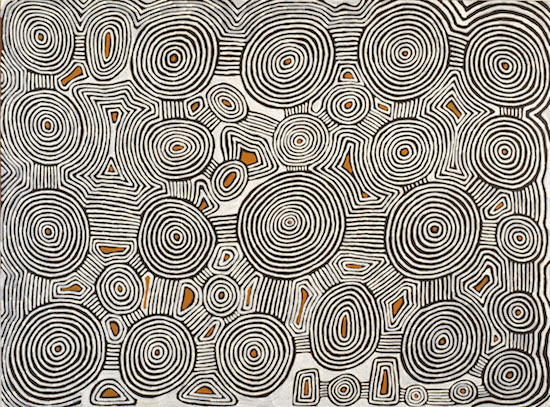From Sharne Wolff…
Ronnie Tjampitjinpa was one of the youngest of the first generation of Pintupi artists. Born in the early 1940s (c.1943) in Western Australia, drought conditions in the following decade meant the young Tjampitjinpa took up work as a stockman. In the 1960s, the artist and his family were removed to Papunya (Northern Territory) where he initially worked as a fencer. In 1971, Tjampitjinpa became involved in the beginnings of the Western Desert painting movement with the renowned Papunya Tula group.
This 40 year survey of the artist’s work at the Art Gallery of New South Wales includes paintings and prints from the Gallery’s holdings together with some loaned from private collections. Older works use motifs of the Tingari people to bring stories of the Western Desert to light. While always retaining a constant awareness of country, Tjampitjinpa began using bright acrylics across a limited palette in shades of orange, red and yellow. Black also features heavily. Adopting under layers of colour to dramatise depth, his trademark minimal style employs bands of painted lines to form patterns of rectangles or circles that radiate from one or more centres across the picture. Charged with energy and movement, Tjampitjinpa’s paintings are dazzlingly hypnotic.
Until November 1
Art Gallery of New South Wales, Sydney
Pic: Ronnie Tjampitjinpa Untitled 2001, synthetic polymer paint on linen canvas, 244.0 x 183.0 cm © Ronnie Tjampitjinpa. Licensed by Aboriginal Artists Agency. Courtesy of the Art Gallery of NSW.

